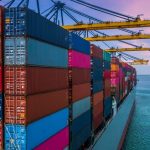The US Trade Representative’s substantial proposed service fees for Chinese maritime operators could have far-reaching implications for global LPG shipping dynamics, US export trends and feedstock economics.
Under this proposal, any Chinese-operated vessel calling at a US port would incur an additional fee of $1 million for loading shipments from the US. This new policy aims to impose higher costs on vessels based on their fleet composition, with fees scaling from $1.5 million for port calls to $500,000, depending on the percentage of Chinese-built ships in the fleet.
This policy proposal comes at a time when US exports of natural gas liquids are experiencing remarkable growth, rising from approximately 49 million mt in 2020 to nearly 75 million mt by 2024, according to analysts at S&P Global Commodity Insights. Chinese-related operators have increasingly participated in these exports, with their market share growing from 11% in 2020 to 18% in 2024.
If implemented, Chinese operators could face significant additional costs, potentially diminishing their competitive edge in the global shipping market. As a result, many of these vessels may be redeployed to other regions, such as the Middle East, to mitigate the financial impact.
However, reshuffling shipping fleets is no simple task. The process, known as “phase out and phase in,” involves several intricate steps. Operators must ensure that their vessels comply with US regulations, which may require upgrades. Crews must be trained to navigate the stricter procedures of US ports, and careful timing is essential to avoid logistical disruptions during the transition. These adjustments will likely affect near-term logistics and complicate operations.
In 2024, 293 Very Large Gas Carriers loaded LPG from the US, with 55 of these vessels either operated by Chinese firms or built in China, according to Commodity Insights analysts. Excluding these vessels from the fleet available for American shipments would pose a significant challenge given the tight availability of ships.
Reshuffling feedstock, arb economics
The impact of rising freight rates is expected to extend beyond logistics, affecting feedstock economics as well. The global petrochemicals industry, already struggling with thin margins, may find it increasingly difficult to absorb higher feedstock costs.
US freight rates are projected to rise by about 25%, resulting in increased costs of $26-$37/mt for routes like Houston, Texas, to Chiba in Japan and $14-$19 for others, according to Commodity Insights analysts. This increase will have a direct effect on feedstock economics, further complicating the industry’s recovery.
Additionally, the proposed fees would worsen the already weak trans-Pacific arbitrage economics. The expected rise in freight rates could add approximately 6 cents/gal to logistics costs, which were already at 31 cents/gal by the end of March.
The potential $1-million fee could translate to a $30/mt increase in delivered prices, making the US-to-Asia arbitrage less competitive and narrowing east-west spreads, one LPG trader said. This shift could lead to marginal barrels favoring Europe over Asia, although Europe lacks the capacity to absorb all of the additional volume from the US Gulf Coast.
These extra costs are likely to be passed on to consumers. Aaron Padilla, the American Petroleum Institute’s vice president of corporate policy, argued that domestically the fees could lead to additional costs of up to $30 billion annually for US consumers.
The API even warned that the proposed fees could jeopardize the US’ position as a global oil exporter since it will make Gulf Coast refined products less competitive with foreign volumes.
Market reaction largely negative
The LPG market’s reaction to the proposed measures had so far been predominantly negative, an LPG broker source said, adding that if they were enacted, market participants anticipated a period of volatility as they reorganized logistics for vessels headed to US ports. This uncertainty complicated long-term planning, with market players expressing concerns about supply security.
“In the short term, the situation will be volatile as people run out the risk/logistics they have on at the time,” the LPG trader said.
As the world’s largest exporter of LPG, the potential decline in US Gulf Coast barrels could constrain global supply levels, leading to inflationary pressures on propane and butane prices. This is particularly concerning for China, where the petrochemical industry relies heavily on US LPG for production.
“I think any policy that leads to friction on clearing US production will damage sentiment,” the trader added. “People will start to have doubts about US supply growth.”
Source: Platts





